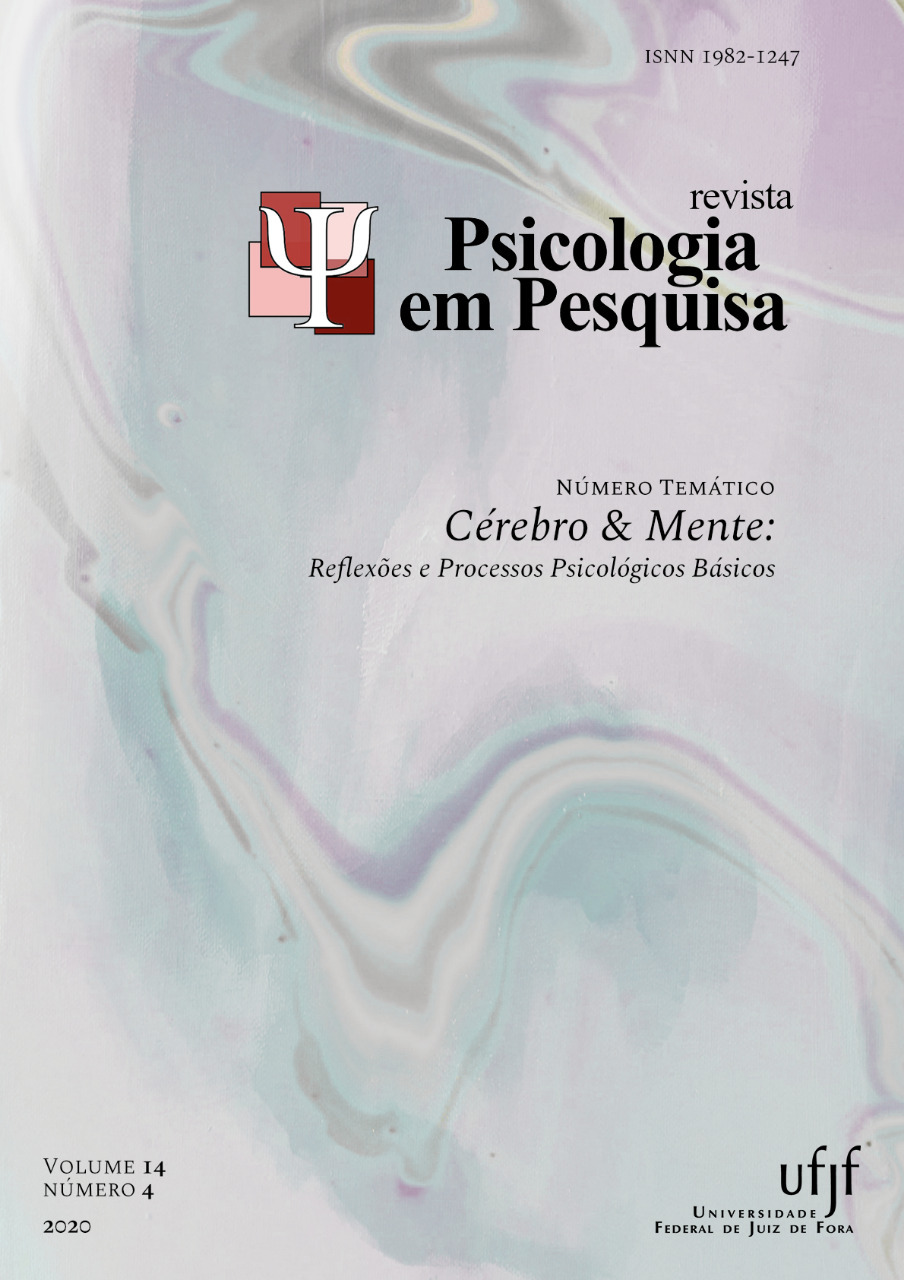A “neurociência” em crise
DOI:
https://doi.org/10.34019/1982-1247.2020.v14.27597Resumo
Esse ensaio busca caracterizar a crise que assola a neurociência, bem como tenta mapear suas possíveis causas. No final, são propostas possíveis soluções que passam por mudança na maneira de se avaliar os projetos de pesquisa, o abandono da questão mente-corpo, a extinção do termo neurociência e a proposta de que a ciência que estuda o sistema nervoso retome suas origens, seu objeto de estudo e volte a ser uma ciência natural.
Downloads
Não há dados estatísticos.
Referências
Eklund, A., Nichols, T. E., & Knutsson, H. (2016). Cluster failure: Why fMRI inferences for spatial extent have inflated false-positive rates. Proc Natl Acad Sci U S A, 113(28), 7900-7905. doi:10.1073/pnas.1602413113
Fiedler, K. (2011). Voodoo Correlations Are Everywhere-Not Only in Neuroscience. Perspect Psychol Sci, 6(2), 163-171. doi:10.1177/1745691611400237
Kriegeskorte, N., Simmons, W. K., Bellgowan, P. S., & Baker, C. I. (2009). Circular analysis in systems neuroscience: the dangers of double dipping. Nat Neurosci, 12(5), 535-540. doi:10.1038/nn.2303
Legrenzi, P., & Umiltà, C. (2011). Neuromania: on the limits of brain science. New York: Oxford University Press.
Logothetis, N. K. (2008). What we can do and what we cannot do with fMRI. Nature, 453(7197), 869-878. doi:10.1038/nature06976
McCabe, D. P., & Castel, A. D. (2008). Seeing is believing: the effect of brain images on judgments of scientific reasoning. Cognition, 107(1), 343-352. doi:10.1016/j.cognition.2007.07.017
Miller, G. (2008). Growing pains for fMRI. Science, 320(5882), 1412-1414. doi:10.1126/science.320.5882.1412
Poldrack, R. A. (2008). The role of fMRI in cognitive neuroscience: where do we stand? Curr Opin Neurobiol, 18(2), 223-227. doi:10.1016/j.conb.2008.07.006
Racine, E., Bar-Ilan, O., & Illes, J. (2005). fMRI in the public eye. Nat Rev Neurosci, 6(2), 159-164. doi:10.1038/nrn1609
Ramani, D. (2009). The brain seduction: the public perception of neuroscience. Journal of Science Communication, 8(4), L01-L08. doi:10.22323/2.08040101
Uttal, W. R. (2001). The new phrenology: the limits of localizing cognitive processes in the brain. Cambridge: MIT Press.
Vul, E., Harris, C., Winkielman, P., & Pashler, H. (2009). Puzzlingly High Correlations in fMRI Studies of Emotion, Personality, and Social Cognition. Perspect Psychol Sci, 4(3), 274-290. doi:10.1111/j.1745-6924.2009.01125.x
Weisberg, D. S., Keil, F. C., Goodstein, J., Rawson, E., & Gray, J. R. (2008). The seductive allure of neuroscience explanations. J Cogn Neurosci, 20(3), 470-477. doi:10.1162/jocn.2008.20040
Fiedler, K. (2011). Voodoo Correlations Are Everywhere-Not Only in Neuroscience. Perspect Psychol Sci, 6(2), 163-171. doi:10.1177/1745691611400237
Kriegeskorte, N., Simmons, W. K., Bellgowan, P. S., & Baker, C. I. (2009). Circular analysis in systems neuroscience: the dangers of double dipping. Nat Neurosci, 12(5), 535-540. doi:10.1038/nn.2303
Legrenzi, P., & Umiltà, C. (2011). Neuromania: on the limits of brain science. New York: Oxford University Press.
Logothetis, N. K. (2008). What we can do and what we cannot do with fMRI. Nature, 453(7197), 869-878. doi:10.1038/nature06976
McCabe, D. P., & Castel, A. D. (2008). Seeing is believing: the effect of brain images on judgments of scientific reasoning. Cognition, 107(1), 343-352. doi:10.1016/j.cognition.2007.07.017
Miller, G. (2008). Growing pains for fMRI. Science, 320(5882), 1412-1414. doi:10.1126/science.320.5882.1412
Poldrack, R. A. (2008). The role of fMRI in cognitive neuroscience: where do we stand? Curr Opin Neurobiol, 18(2), 223-227. doi:10.1016/j.conb.2008.07.006
Racine, E., Bar-Ilan, O., & Illes, J. (2005). fMRI in the public eye. Nat Rev Neurosci, 6(2), 159-164. doi:10.1038/nrn1609
Ramani, D. (2009). The brain seduction: the public perception of neuroscience. Journal of Science Communication, 8(4), L01-L08. doi:10.22323/2.08040101
Uttal, W. R. (2001). The new phrenology: the limits of localizing cognitive processes in the brain. Cambridge: MIT Press.
Vul, E., Harris, C., Winkielman, P., & Pashler, H. (2009). Puzzlingly High Correlations in fMRI Studies of Emotion, Personality, and Social Cognition. Perspect Psychol Sci, 4(3), 274-290. doi:10.1111/j.1745-6924.2009.01125.x
Weisberg, D. S., Keil, F. C., Goodstein, J., Rawson, E., & Gray, J. R. (2008). The seductive allure of neuroscience explanations. J Cogn Neurosci, 20(3), 470-477. doi:10.1162/jocn.2008.20040
Downloads
Publicado
2020-10-24
Edição
Seção
Número Temático Cérebro & Mente: Reflexões e Processos Psicológicos Básicos















